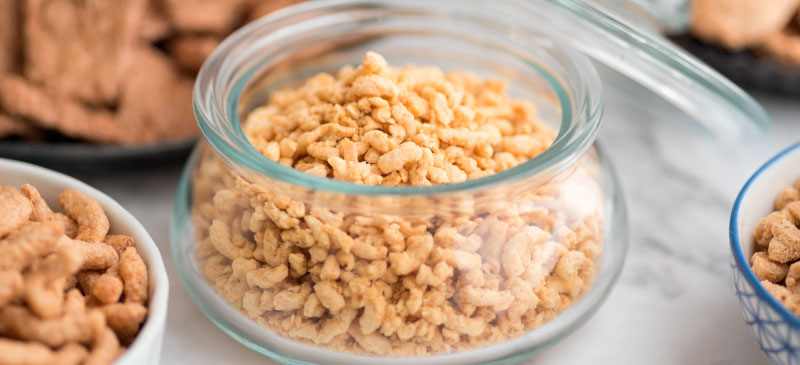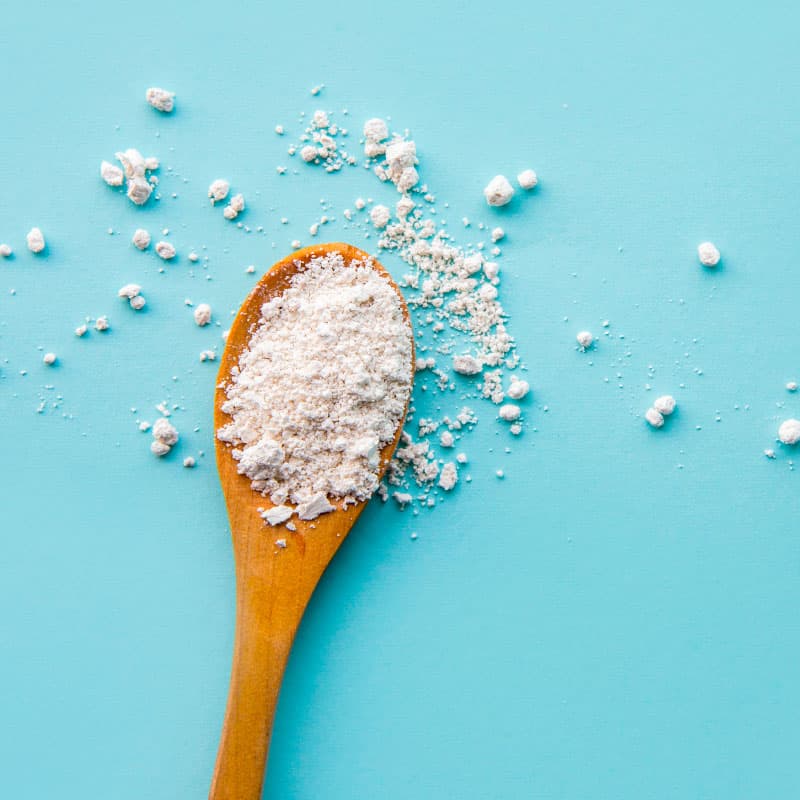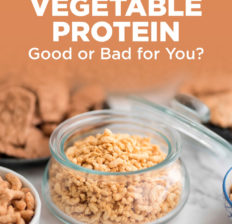This Dr. Axe content is medically reviewed or fact checked to ensure factually accurate information.
With strict editorial sourcing guidelines, we only link to academic research institutions, reputable media sites and, when research is available, medically peer-reviewed studies. Note that the numbers in parentheses (1, 2, etc.) are clickable links to these studies.
The information in our articles is NOT intended to replace a one-on-one relationship with a qualified health care professional and is not intended as medical advice.
This article is based on scientific evidence, written by experts and fact checked by our trained editorial staff. Note that the numbers in parentheses (1, 2, etc.) are clickable links to medically peer-reviewed studies.
Our team includes licensed nutritionists and dietitians, certified health education specialists, as well as certified strength and conditioning specialists, personal trainers and corrective exercise specialists. Our team aims to be not only thorough with its research, but also objective and unbiased.
The information in our articles is NOT intended to replace a one-on-one relationship with a qualified health care professional and is not intended as medical advice.
The Pros & Cons of Textured Vegetable Protein
June 30, 2022

It might be high in protein, and it makes a great plant-based meat substitute, but is textured vegetable protein healthy?
Like other sources of soy, such as tofu or soy milk, there are both pros and cons associated with textured vegetable protein.
It’s inexpensive, versatile, stays fresh for a long time and is a sustainable vegan source of protein. On the other hand, processed soy products are not always easy to digest — plus eating soy frequently can potentially change the way your body produces certain hormones, and it’s a common allergen, too.
What Is Textured Vegetable Protein (TVP)?
What is textured vegetable protein (TVP) made out of? It’s made from soy flour, which is derived from soybeans.
TVP was created in the 1960s by a man working in the agriculture industry. Today, it’s most often sold as TVP “crumbles,” which can be used to make different meat alternatives, like vegan sausages, vegan taco “meat” and so on.
You’ll also find TVP in most packaged meat substitutes sold in grocery stores, including soy sausages, soy burgers and soy chicken strips.
Types/varieties:
TVP goes by several other names depending on the country where it’s sold, including soy meat, soya chunks/granule/slices or defatted soy flour.
All types of textured vegetable proteins are made from dried soy, but there are a bunch of different TVP options sold in stores, which mainly differ in terms of their sizes and shapes.
When shopping for TVP, you’ll find:
- granules
- flakes (big and small)
- chunks
- slices
- strips
- nuggets
What does TVP taste like?
When it’s not combined with other spices and ingredients, it basically tastes like nothing. TVP has almost no flavor on its own, making it ideal in terms of versatility in recipes.
In stores, it’s available in a variety of flavored and unflavored varieties, such as those meant to mimic the flavor of beef, bacon, ham, chicken and sausage.
If you buy the unseasoned type, expect it to taste bland. You’ll want to add other flavors, such as spices and sauces, to make it more appealing.
Nutrition
Soybeans are naturally high in protein, especially for a plant. This is exactly why soy products — including TVP, soy milk and soy protein powder — are among the most popular plant-based protein sources.
TVP is low in both fat and cholesterol and also high in fiber. This makes it appealing to those following low-fat diets, such as adults with a history of heart disease risk factors, including high cholesterol.
Additionally, it’s a good source of a number of essential nutrients — including magnesium, phosphorus, iron, zinc, vitamins B2 and B6, potassium, and folate.
According to the U.S. Department of Agriculture, one cup (approximately 68 grams) of coarse grain textured vegetable protein contains about:
- 222 calories
- 23.1 grams carbohydrates
- 35 grams protein
- 0.8 grams fat
- 11.9 grams fiber
- 2.8 milligrams copper (311 percent DV)
- 207 micrograms folate (52 percent DV)
- 197 milligrams magnesium (47 percent DV)
- 0.5 milligrams thiamine (42 percent DV)
- 458 milligrams phosphorus (37 percent DV)
- 6.3 milligrams iron (35 percent DV)
- 1,620 milligrams potassium (34 percent DV)
- 0.4 milligrams vitamin B6 (24 percent DV)
- 1.7 milligrams zinc (15 percent DV)
- 0.2 milligrams riboflavin (15 percent DV)
- 1.8 milligrams niacin (11 percent DV)
Potential Benefits
1. High in Protein
Soybeans are a great vegan/vegetarian high-protein food, especially because they contain all amino acids, some of which are missing from other plant foods. This is why is soy is referred to as a “complete protein.”
2. Great Source of Fiber
Textured vegetable protein is gluten-free, since it’s made from soybeans and not grains, and very high in fiber.
While not everyone digests soy products well, for those who can tolerate it, it can contribute lots of dietary fiber to their diets, aiding in elimination and preventing constipation.
TVP can also be very filling, since it contains a winning combination of protein and fiber. This, coupled with the fact that it’s relatively low in calories, makes it a useful ingredient for those who are dieting and looking to lose weight.
3. Meat-Free (Good for Vegans/Vegetarians)
Because it has a similar texture to ground meat once it’s cooked, TVP is a very popular ingredient in vegan foods. It can essentially “scratch the itch” for meat-like foods, such as meatballs or ground meat, while still allowing someone to stick to a plant-based diet.
Downsides, Risks and Side Effects
How is textured vegetable protein made? Is TVP highly processed?
To make textured vegetable protein, soybeans are first dried/dehydrated. Then they are ground in flour and made into crumbles of different sizes.
TVP can be considered somewhat highly processed because it must be extruded, which causes a change in the structure of the soy protein. Many TVP producers also use solvents, such as hexane, to separate soy fat from soy protein. There’s always the possibility that tiny amounts of the solvent linger in the TVP.
Overall, TVP is a processed product and not the same thing as eating actual soybeans. While soybeans are found in nature, textured vegetable protein is definitely not.
What are the disadvantages of TVP?
The main disadvantages of including this product in your diet include:
- Difficulty digesting soy properly — When soy is not fermented (soaked and sprouted), it can be hard to break down due to antinutrients it contains, which block some of its minerals from being absorbed. This is one reason why fermented soy products are usually a better option, such as tempeh, miso or organic tofu.
- Possible allergenic reactions to soy — Soy is a common allergen and can cause side effects among some people, such as indigestion, rashes, hives and even serious complications, including anaphylaxis.
- Likely to be GMO — The vast majority of soy grown in the United States is genetically modified. Look for certified organic TVP if you do decide to purchase it.
- Potential affects on hormonal balance — Soy is a unique food because it’s high in compounds called isoflavones, which are a type of plant estrogen (or phytoestrogen). Phytoestrogens have the ability to act like human estrogen in the body, which sometimes has an effect on hormones if you eat lots of soy products on a regular basis.
- Possibility of consuming other harmful ingredients — Because TVP is found in mostly processed foods, you’re likely to consume additives, preservatives, lots of sodium and added sugar, and other unwanted ingredients if you consume a lot of products that contain it. Plus, there’s a small risk of consuming solvents that are left lingering in TVP due to the manufacturing process.
How to Use/Recipes (Plus Better Alternatives)
Since textured vegetable protein basically has no flavor on its own, it will absorb whichever flavors you combine it with. This makes it versatile in lots of different recipes.
Look for TVP in health food stores, large supermarkets or online. Keep it dry and stored in airtight container away from heat and moisture. It should stay fresh for about one year.
However, once you rehydrate TVP, use it within one to three days, or it will spoil.
If you purchase TVP crumbles, you’ll first need to combine them with water to rehydrate them. TVP on its own is dry and dehydrated, so it’s recommended that you soak it in hot water or broth for about 10 minutes before using it in recipes.
If you prefer for TVP to remain softer once rehydrated, such as when making sauce or soups, add 1/2 cup of dry TVP to the liquid, and let it rehydrate on a low simmer.
Recipe ideas:
There are loads of different ways to use TVP at home, including in vegan and vegetarian meals, such as meat-free:
- Chilis
- Meatballs and meat sauces
- Soups and stews
- Burgers and sausages
- Tacos and burritos
- Sloppy Joes
- Shepard pies
For the best results, the Elephantastic Vegan website recommends using specific types of TVP when making certain recipes:
- Granule, crumble or mince – best for vegan bolognese, vegan lasagna or vegetarian chili.
- Chunks — best for stews and goulash.
- Slices or medallions – great for vegan schnitzel or TVP burgers.
- Strips or curls – good for chicken alternatives, such as “chicken fingers.”
Here are recipes to try making at home using TVP (sub in TVP for ground meat in non-vegan recipes):
- 21 Easy Vegetarian Recipes for Beginners
- Gluten-Free Meatballs Recipe
- Zucchini Lasagna Recipe
- 33 Healthy Ground Beef Recipes
- Vegan TVP Tacos
What are healthier substitutes for TVP?
If you’re a plant-based eater and avoid all meat, you can use organic tofu, organic tempeh, natto, quinoa, coarse bulgar or mushrooms in place of textured vegetable protein.
The benefit of choosing organic/fermented soy over TVP is that it can be easier to digest and absorb the nutrients from these products, since fermentation helps unlock protein, minerals and enzymes within soy.
Mushrooms make a great meat substitute in most recipes due to their rich flavor and meaty texture — plus they provide fiber and nutrients. This is why various species of mushrooms, such as portobellos, are popular ingredients in many vegetarian recipes.
Other healthy meat substitutes that you can start incorporating into your daily diet include jackfruit, legumes, nuts and seeds.
If you do include meat in your diet, opt for grass-fed ground beef or ground turkey or chicken instead.
What about mycoprotein — is this a good sub for TVP? Mycoprotein is an ingredient found in many vegetarian meat substitute products, including Quorn. It’s made by fermenting a type of microscopic fungi and then combining the solids with egg whites, wheat protein and other ingredients.
While it’s high in fiber and considered a complete protein, it’s been shown to cause adverse reactions in many individuals who may not have realized they were allergic. Therefore it’s not one of the best options.
Conclusion
- Is textured vegetable protein (TVP) good for you? Yes and no. It’s a good meat substitute since it’s high in protein and fiber, making it filling, but it can cause indigestion and allergic reactions in some cases.
- What is TVP made of? It’s made from processed, dehydrated soy flour (dried soybeans).
- What’s wrong with TVP? It’s often made with solvents and other chemicals and then added to processed foods that contain many additives. If you do choose to eat TVP, stick to limited amounts, and opt for organic products.









